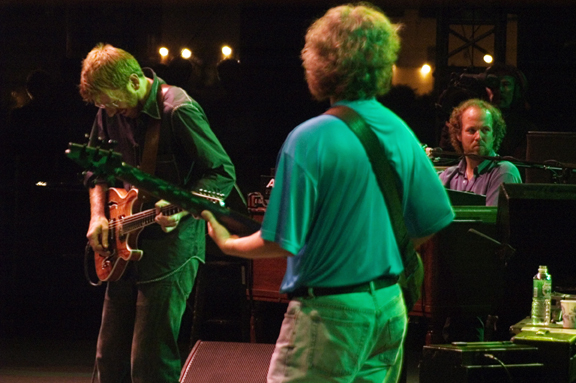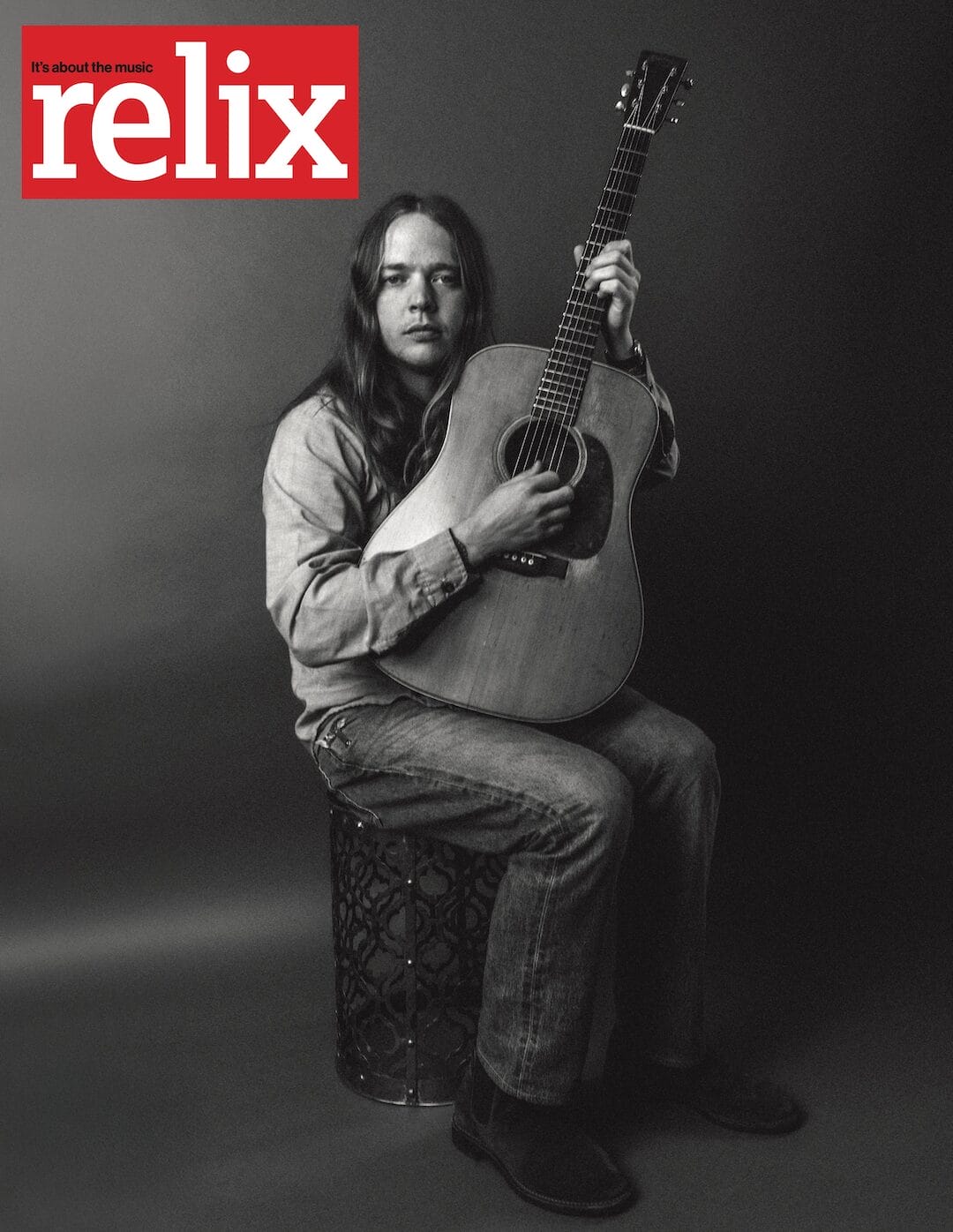Soapbox: A Musicologist Geeks Out With Phish

Photo by Libby McLinn
Shaugn O’Donnell, Associate Professor of Music at The City College and Graduate Center in New York (CUNY), has mad theory chops.
He wrote his dissertation on transformational networks and voice leading in twentieth-century atonal music. He tosses around terms like chromatic aggregate, relational abundance and Klumpenhouwer network in his graduate seminars. Even more extraordinary: He knows what the terms mean.
The Beatles, Pink Floyd and The Grateful Dead, however, take up most of O’Donnell’s time these days. He analyzes and writes about sophisticated psychedelic-era rock songs, chairs rock panel sessions at music theory conferences, and contributes articles to scholarly publications – essays with titles such as "On the Path: Tracing Tonal Coherence in Dark Side of the Moon. "
Last year, Professor O’Donnell – who also plays electric guitar and sports a Steal Your Face tattoo on his shoulder – caved in to mounting pressure from his students and went to see a Phish concert.
“They have been trying to get me into Phish for years – since 1996 – but they were making me listen to albums,” O’Donnell says. “It wasn’t until seeing Trey [Anastasio] perform live with other musicians [like Dave Matthews] that I got it. They should’ve just given me recordings of shows.”
What do these two related pursuits – going to rock shows and analyzing music – have in common exactly? The first involves aural processing on the fly amid throngs of reveling dancers; the latter involves staff paper, headphones, a quiet room and pajamas. Both hobbies, however, require a decent set of ears, which leads me to ask O’Donnell how he thinks a Phish concert could possibly engage the sensibilities of someone who develops and teaches cutting-edge analytical strategies for a living. How, in other words, does his job affect the way he listens to an event as hugely popular as a Phish show?
“My [theoretical] training was prior to my Phish shows,” he explains, “so I’m not sure. I do know I am very entertained by the way the audience responds to musical objects – for example, cheering diminished chords. [Phish fans] are more consciously structure oriented than any other pop-rock audience I’ve encountered.”
Academically inclined musicians – geeks like me – have always found a lot of complex elements to analyze formally in Phish’s music: Pungent harmonies, rhapsodic formal structures, musical allusions, contrapuntal passages, and so on. In college, Anastasio studied counterpoint – arguably composition’s most rigorously academic pursuit – with Vermont composer Ernie Stires. He still busts out arcane compositional methods that he absorbed long ago – contrasting sections of imitative polyphony with angular rock vamps, faux-Latin grooves and other musical objects.
On some level, I’ve always heard Phish jams as musical “exercises” with built-in problems, like a certain two-chord progression or melodic mode (say, dorian or mixolydian ) over a fixed dynamic trajectory of “soft to loud,” as in “David Bowie,” “Reba” or “Run Like an Antelope.” The band loves working out these problems on stage, and following along has pushed me as a listener.
For the last 20 years, I’ve listened to them wrangle the extra eighth note, the speed bump, crammed into the otherwise uninteresting – intentionally uninteresting – harmonic/rhythmic environment at the end of “Split Open and Melt.” On good nights, such as April 23, 1993 at Colgate University, Phish’s solution is elegant. It plays over and across the eighth note, rather than to the eighth note. If you hit the speed bump fast enough, then it won’t destroy your car.
Similarly, Jake Cohen feels that his musicological training informs his experiences at Phish shows – and vice versa. Cohen, a CUNY musicology graduate student, follows large-scale harmonic trajectories, savoring jams that depart from his expected goals. If the band ventures down a new harmonic path, he tries to figure out how it got there and where it is going.
“I try not to get too geeky unless someone wants to hear it and can understand what I’m saying,” he says. “There’s no point in telling someone that the huge release in ‘Stash’ was because [bassist] Mike [Gordon] kept playing flat seven under Trey’s incessant diminished V chord if they don’t know what that means.” He pauses for emphasis: “And never talk about it mid-song.”
Michael Hamad received a Ph.D. in musicology from Brandeis University in 2005 and a master’s degree in music theory from The Hartt School of Music in 1997. He teaches at Gateway Community College in New Haven, Conn. and is working on The Historical Dictionary of Rock and Pop for Scarecrow Press.




















